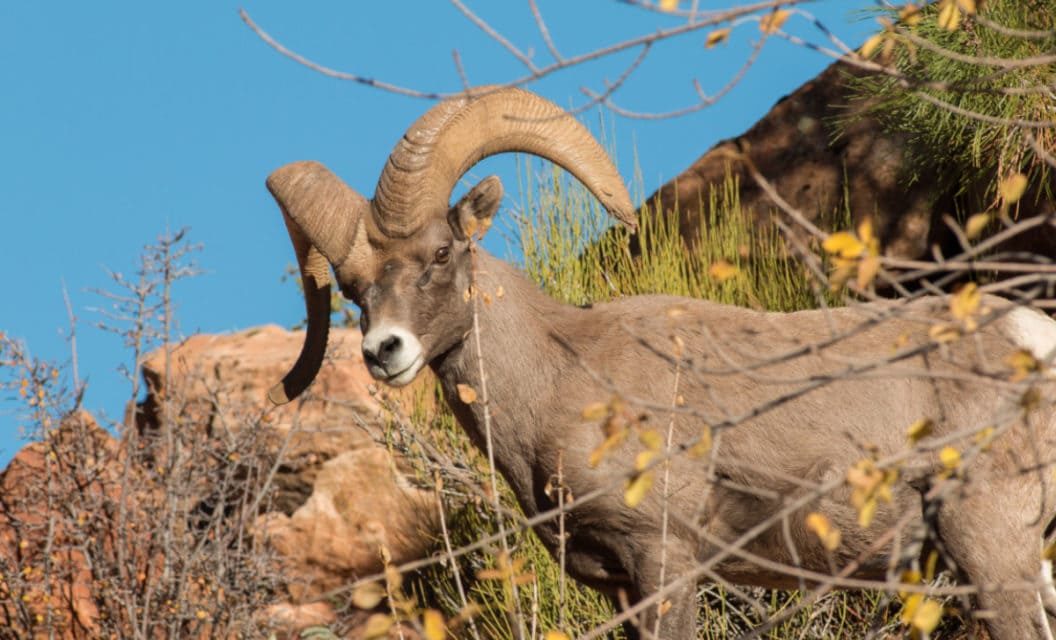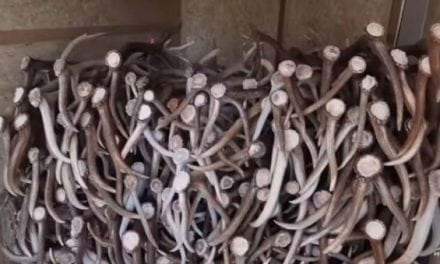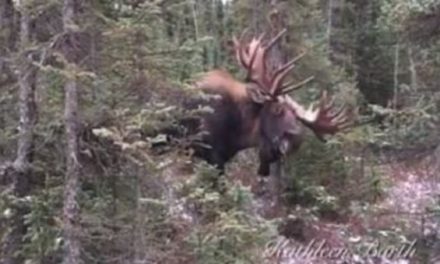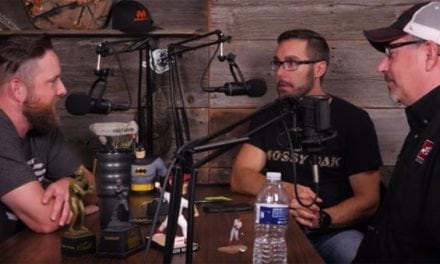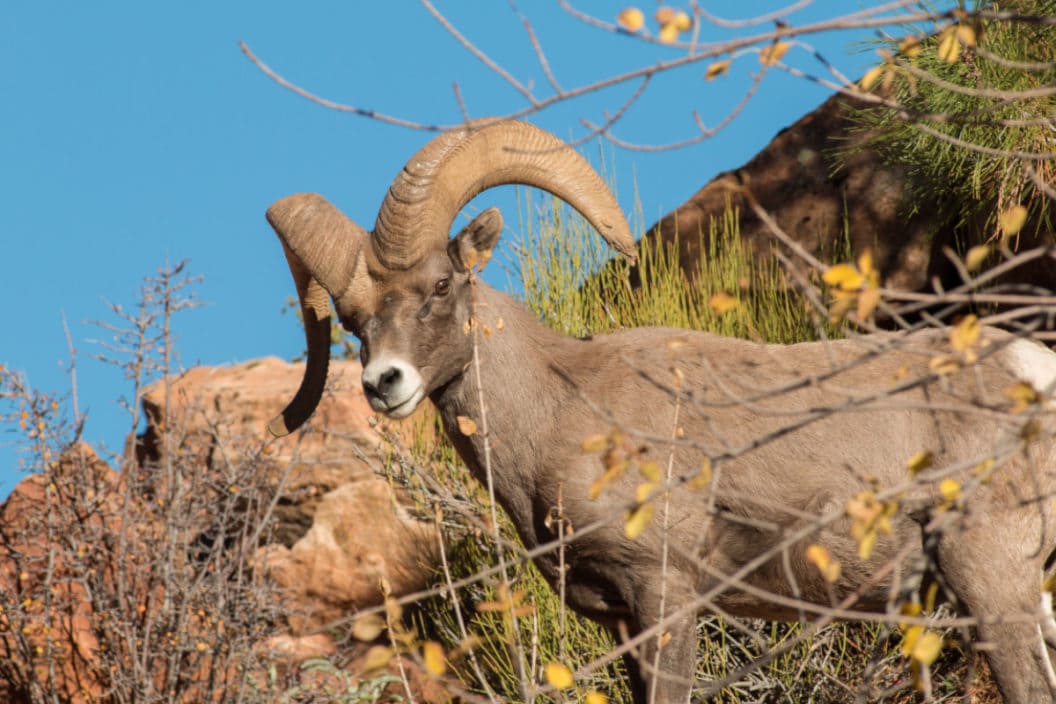
Conservation is rarely perfect and while it has helped many animals rebound to sustainable numbers, there are others that are still a work in progress. Perhaps none more than the desert bighorn sheep subspecies or Ovis canadensis nelsoni, as it is known in scientific circles. Like the whitetail deer, the bison, and pronghorn antelope, these animals suffered a huge decline as settlers started exploring west in the mid 1800s. The big difference is that North American desert bighorn sheep populations have seemed to be in state of constant flux since then. Unfortunately, these animals have experienced many significant setbacks, both natural and manmade, that haven’t exactly made things easy for this species.
While the populations have stabilized enough for some limited desert bighorn sheep hunting to happen, we still need to tread a very fine line here to ensure the population stays robust in the steep terrain of the high desert mountain ranges this magnificent animal calls home. The story of this animal is a good one for hunters to study because it gives a chance to see conservation happening in real time, and not just what we read in the history books for other species like the bison. Because major conservation work for this species is happening right now as you are reading this, and likely will be for some time to come.
The Start of the Desert Bighorn’s Downward Spiral
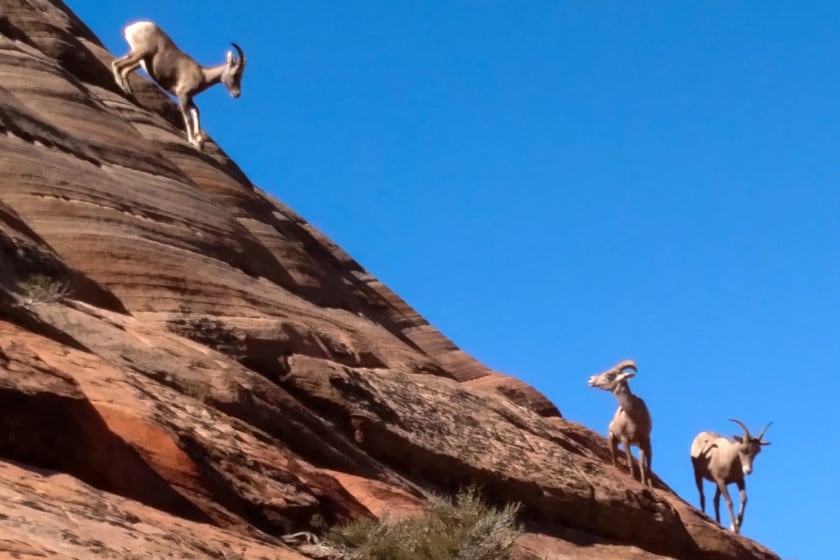
Robert Ford via Getty Images
Prior to European settlers, all wild sheep had a wide range over much of the western United States. Their range stretched as far North as Canada, and as far South as Mexico. They ranged throughout Nevada, and large swathes of Utah, Arizona, Colorado, Idaho, California, and Oregon. They also had robust populations in Montana, Wyoming, New Mexico, and even Texas.
According to the National Park Service, today’s herds of desert bighorns are only about 10 percent of historic populations. So, what the heck happened? Well, overhunting was a huge part of it. We’ve talked before about how market hunting was completely unregulated until the Lacey Act was finally signed into law in May 1900. Like many other species, bighorn sheep were adversely affected with no laws in place to protect them. However, the bigger factor in the downfall of bighorns, both the Rocky Mountain bighorn sheep and the desert varieties came from a threat you might not expect, and that’s domestic livestock.
Many settlers brought domestic sheep with them to North America, and they let them loose to graze in areas that were traditionally used by bighorns. Thus, some of the first habitat loss for bighorns occurred. However, the bigger problem with domestic sheep was disease. Many domestic animals transmitted diseases like bighorn sheep pneumonia to wild populations. These diseases were often highly contagious. Ewes can even spread it to their lambs. The wild bighorns had no natural immunity to such diseases, making them even more susceptible to disease, cutting short their natural life spans.
Combine disease with even more habitat loss due to human development, and bighorn populations everywhere were finding themselves with nowhere to go. Bighorns are well adapted to surviving in the desert without water. However, the NPS notes that competition with wild horses and burros may have also played a part in squeezing desert bighorns out of some areas.
By the time the 1960s rolled around, bighorn populations were already at historic lows, but the desert bighorn even more so. The animals had been eliminated from Colorado and Utah by that time, and there were only a handful living in west Texas. Most other states only had around 1,500 to 2,500 animals remaining. Things were looking rather bleak for the desert bighorn.
It doesn’t help matters any that most Ewes only give birth to one lamb at a time. And the lambs that are easy targets for predators like mountain lions, coyotes, and bobcats. In the case of the Peninsular bighorn sheep, a variety of the desert bighorn found in southern California and down into Baja California, Mexico, an increase in mountain lions and predation of lambs is believed to have driven their numbers even lower in those locations.
Bighorns also have a rigid social hierarchy with mature rams controlling breeding rights. The younger male sheep often need to survive for five to seven years before they can compete with other bighorn rams. Some of these young rams will start wandering in search of ewes and end up either the target of predators, or wander into areas where they contract diseases they can bring back to the rest of the herd after the rut. In short, all these factors make repopulation slow whenever sheep experience a population dip.
The Desert Bighorn’s Slow Comeback
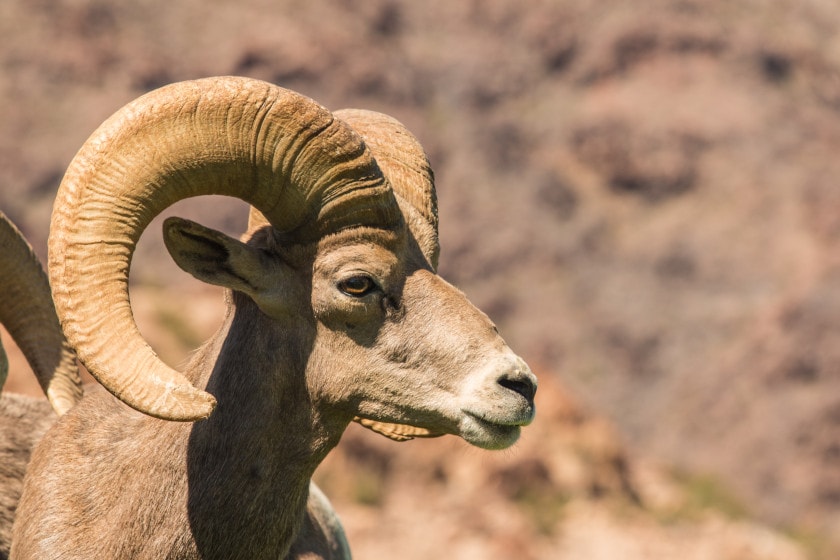
twildlife via Getty Images
Unfortunately, bighorn sheep just don’t seem to adapt well to living among humans and domestic animals. Most biologists agree these animals need tons of wild, undisturbed space to thrive. Which is why it was a huge help when several large wildlife refuges were established in New Mexico and Arizona in the late 1930s and early 1940s. You can thank the Boy Scouts and Major Frederick Russel Burnham for pushing heavily for the creation of the Kofa, Cabeza Prieta, and Andres National Wildlife Refuges.
Many state wildlife agencies realized simply preserving habitat wasn’t going to be enough. Especially in places like Texas where the population had been devastated. Texas started restocking efforts in 1954, and efforts continued through the late 1990s. Most of these animals came from sheep bred in captive facilities, but many state agencies have also done relocations of wild animals. For example, New Mexico has done most of their reintroductions with animals captured from other refuges.
In 1974, a group of hunters joined up to form the non-profit Wild Sheep Foundation. This was a real turning point as the organization became a big player in helping to raise funds for the further conservation of these animals. Today funds raised by the organization go to research, education, habitat restoration, and management policies. According to the New Mexico Department of Game and Fish, they spend approximately half a million dollars on sheep alone each year, all this money coming from organizations like the Wild Sheep Foundation. This additional help came just in time, because the total desert bighorn sheep population was estimated to be under 10,000 animals by 1980.
The big challenge is that desert bighorns have periodically experienced massive setbacks despite our best efforts. Using New Mexico as an example again, their bighorn herd in the San Andres Mountains was hit hard by an outbreak of scabies in 1979. Prior to the outbreak, the herd numbered nearly 200 animals. The outbreak reduced that number to 75 before an influx in predators wiped out all by one female sheep. Reintroductions there started in 1999 and continued through 2005.
Another example comes from Joshua Tree National Park, where an adult ram tested positive for bighorn pneumonia in 2015. That area has also been hit hard by drought, resulting in fewer water sources for the bighorns. Simply put, there have been a lot of unforeseen hurdles that just seem to keep popping up in the conservation of the desert bighorn. It hasn’t been an easy road, but the good news is that organizations like the U.S. Fish and Wildlife Service say the population continues to trend upward. It seems restoration may take a little longer than some of our more successful big game like deer and elk. It’s that unpredictable nature of the herd that makes desert bighorn sheep hunting tags so hard to acquire.
We suppose the greater lesson here is there is no “one size fits all approach” when it comes to conservation. Every species needs their own specific policies and approaches for preserving their numbers for future generations to enjoy. It’s up to us to be adaptive to each animal’s needs if we’re all going to continue to coexist in a continually changing modern world.
For more outdoor content from Travis Smola, be sure to follow him on Twitter and Instagram For original videos, check out his Geocaching and Outdoors with Travis YouTube channels.
READ MORE: WILD TURKEY CONSERVATION HISTORY: HOW GOBBLERS MADE THEIR HISTORIC COMEBACK
The post Desert Bighorn Sheep: Why Their Road to Recovery Has Been So Rocky appeared first on Wide Open Spaces.

